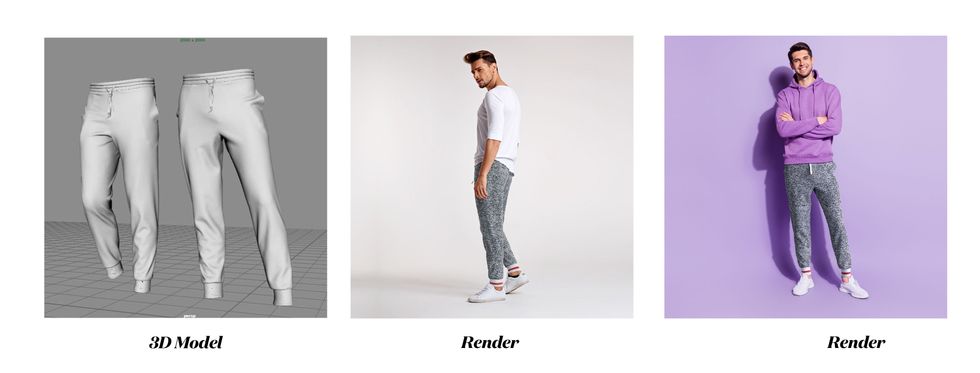Retail Channels
03 June 2022
Outgoing Amazon Consumer CEO Dave Clark leaves a logistics legacy
Clark was the architect of the company's sprawling fulfillment and delivery network.

Amazon Consumer CEO Dave Clark. (Photo via Amazon)
Clark was the architect of the company's sprawling fulfillment and delivery network.

Amazon Consumer CEO Dave Clark. (Photo via Amazon)
Dave Clark led a massive expansion of Amazon’s logistics network, and rose to be the head of the company’s division focused on selling consumer goods. Now, after 23 with the company, he is moving on.
Amazon announced on Friday that Clark will step down in July from his role as worldwide CEO of Amazon’s consumer business. It’s a position he held since January 2021, when prior consumer CEO Jeff Wilke retired. Clark hinted at a “new journey” in his own message, but did not elaborate on where he is heading.
“I've had an incredible time at Amazon but it’s time for me to build again,” Clark wrote on Twitter. “It's what drives me.”
\u201cI've had an incredible time at Amazon but it\u2019s time for me to build again. It's what drives me. To all I've had the honor of working with: thank you for making it so much fun to come to work every day for 23 years to invent cool, amazing things for customers.\n\nEmail to team below\u201d— Dave Clark (@Dave Clark) 1654271992
A 23-year employee with the company, it’s that role as a builder that has earned Clark a place in Amazon lore. Specifically, Clark led the company’s logistics operation at a time when it underwent a big expansion. Amazon’s ecommerce business brought the ability to click and order a package that showed up at a customer’s doorstep. But behind the scenes, there are lots of steps to get an item between those two endpoints. As Amazon sought to move an ever-growing number of goods in ever-faster delivery times, it built a sprawling network of its own. In doing so, just as it did with AWS and cloud computing, Amazon created one of the country’s largest shipping businesses inside a company that’s known primarily for selling goods.
The company’s complex network is made up of a variety of components, many of which were stood up or dramatically expanded when Clark held a series of VP roles in operations and fulfillment: Fulfillment centers, planes, entrepreneur-run delivery companies and Flex drivers. Over time, it aimed to reduce dependence on companies like UPS and the Postal Service in favor of its own operations. This gave Amazon an equally sprawling workforce at its warehouses, and the growth came coupled with employees speaking up about working conditions. Clark’s reputation as a defender of Amazon in public showed up on this front. After comedian John Oliver spotlighted warehouse issues on his HBO show in 2019, Clark tweeted that Oliver was “wrong” on Amazon, arguing it has a "safe, quality work environment in our facilities.”
Along the way, anecdotes painted Clark as a bold executive who became the architect of the logistics network. In 2012, he pushed for the acquisition of warehouse robot company Kiva Systems. From Bloomberg:
Clark also distinguished himself by taking big risks, rare in logistics since most executives aren’t allowed to lose money to the extent tolerated at Amazon. A defining moment came in 2012 when Amazon was thinking about buying robot-maker Kiva Systems to make its warehouses more efficient. Workers were walking miles each day fetching products; instead Kiva robots would bring them the products. But the $775 million price represented Amazon’s second-biggest acquisition at the time behind online footwear seller Zappos, so executives were hesitant. Breaking the silence in a meeting, according to an attendee, Clark said, “I only know one way to play poker and that’s all-in,” then pushed an imaginary pile of chips to the center of a conference table.
Clark is also credited with launching Amazon Air, the company’s fleet of airplanes. The air cargo operation “has become a symbol of Amazon’s logistics ambitions and highlights Bezos’ faith in Clark,” Bloomberg noted.
The logistics buildout only continued in the pandemic. In 2020 alone, the company expanded fulfillment capacity by 50% as it raced to respond to the massive uptick in pandemic demand. At the same time, Amazon is conducting pilots that indicate a particular focus on last-mile delivery. In one, drivers are delivering goods directly from malls to customer doorsteps. In another, small businesses in rural areas are making deliveries for the company.
“The past few years have been among the most challenging and unpredictable we’ve faced in the history of Amazon’s Consumer business, and I’m particularly appreciative of Dave’s leadership during that time,” Amazon CEO Andy Jassy wrote.
Clark is leaving Amazon at a time when it actually has too much space. Executives said the company overbuilt during the pandemic, leading to additional costs in the first quarter. While the company plans to shed some warehouse space, leaders have said they believe the company will be able to grow into it. Amazon’s streak of invention in the consumer business hasn’t seemed to let up. The company recently debuted Buy With Prime, a service that will allow any website to embed Amazon Prime’s checkout and delivery guarantee, and use its logistics network. The announcement of the service in April appeared to herald another era that would feed the growth of Amazon’s fulfillment and delivery business, as more companies would appear likely to opt into it. But if that comes to pass, further buildout will be led by others at Amazon.
Jassy did not name a successor for Clark, writing that he expects to have an update in the next few weeks.
“While change is never easy, I’m optimistic about the plan that the Consumer team has built and have confidence that if we stay focused on executing it, we’ll deliver the right experiences for customers and results for the business,” Jassy wrote.
Amazon partnered with Hexa to provide access to a platform that creates lifelike digital images.
A 3D rendering of a toaster from Hexa and Amazon. (Courtesy photo)
Amazon sellers will be able to offer a variety of 3D visualizations on product pages through a new set of immersive tools that are debuting on Tuesday.
Through an expanded partnership with Hexa, Amazon is providing access to a workflow that allows sellers to create 3D assets and display the following:
Selllers don't need prior experience with 3D or virtual reality to use the system, according to Hexa. Amazon selling partners can upload their Amazon Standard Identification Number (ASIN) into Hexa’s content management system. Then, the system will automatically convert an image into a 3D model with AR compatibility. Amazon can then animate the images with 360-degree viewing and augmented reality, which renders digital imagery over a physical space.
Hexa’s platform uses AI to create digital twins of physical objects, including consumer goods. Over the last 24 months, Hexa worked alongside the spatial computing team at Amazon Web Services (AWS) and the imaging team at Amazon.com to build the infrastructure that provides 3D assets for the thousands of sellers that work with Amazon.
“Working with Amazon has opened up a whole new distribution channel for our partners,” said Gavin Goodvach, Hexa’s Vice President of Partnerships.
Hexa’s platform is designed to create lifelike renderings that can explored in 3D, or overlaid into photos of the physical world. It allows assets from any category to be created, ranging from furniture to jewelry to apparel.

The result is a system that allows sellers to provide a new level of personalization, said Hexa CEO Yehiel Atias. Consumers will have new opportunity see a product in a space, or what it looks like on their person.
Additionally, merchants can leverage these tools to optimize the entire funnel of a purchase. Advanced imagery allows more people to view and engage with a product during the initial shopping experience. Following the purchase, consumers who have gotten a better look at a product from all angles will be more likely to have confidence that the product matches their needs. In turn, this can reduce return rates.
While Amazon has previously introduced virtual try-on and augmented reality tools, this partnership aims to expand these capabilities beyond the name brands that often have 1P relationships with Amazon. Third-party sellers are an increasingly formidable segment of Amazon’s business, as they account for 60% of sales on the marketplace. Now, these sellers are being equipped with tools that enhance the shopping experience for everyone.
A video displaying the new capabilities is below. Amazon sellers can learn more about the platform here.
Hexa & Amazon - 3D Production Powerhousewww.youtube.com